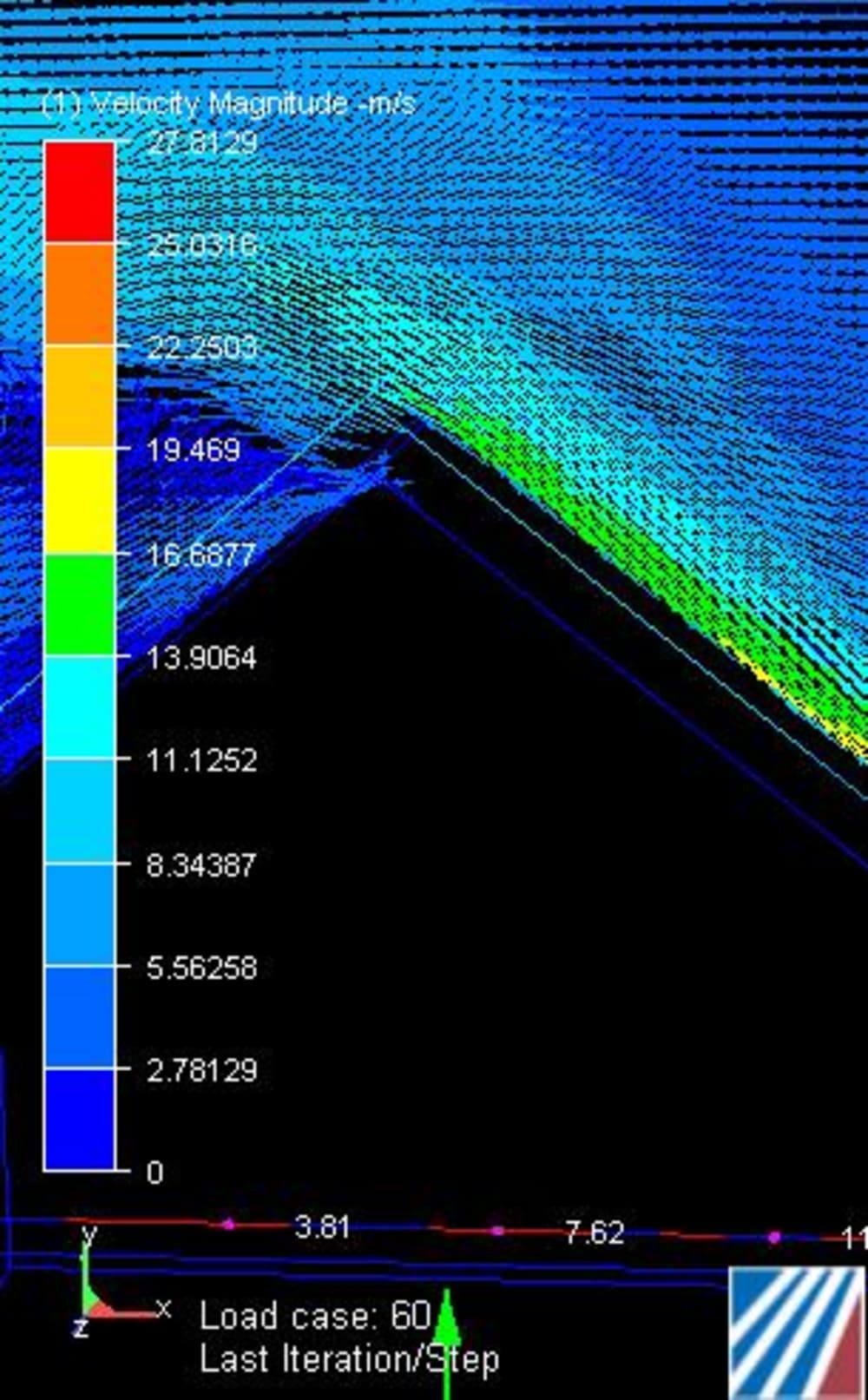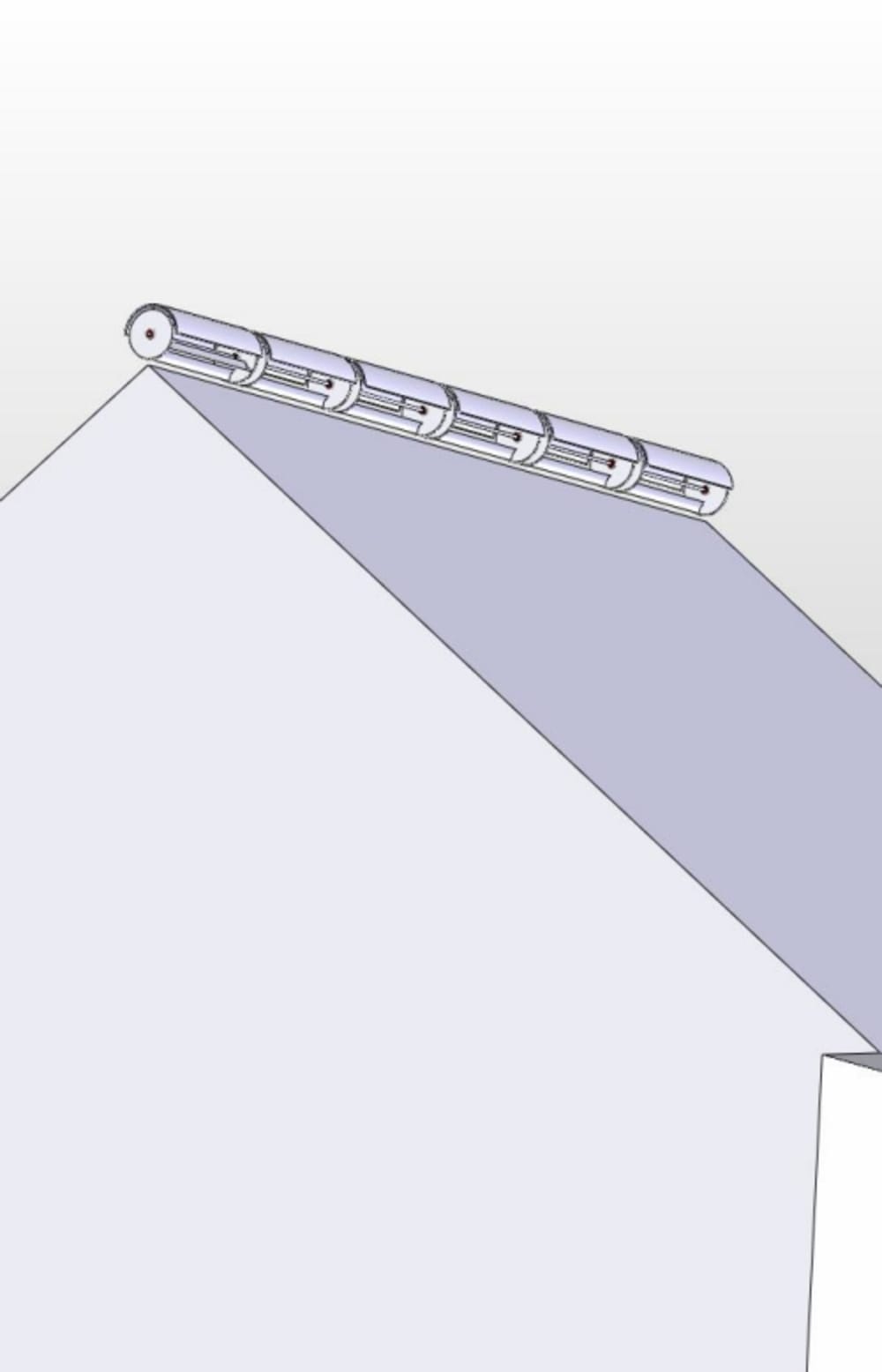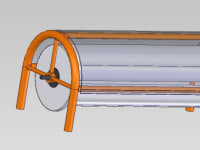The reason rooftop turbine designs have not enjoyed commercial success in the past is more due to technological shortcomings than demand. Companies have tried to scale down familiar fan blade style designs that would normally be mounted on a tower to avoid turbulence, but these mini-turbines lack adequate surface area to be efficient. Others have attempted to use vertical axis wind turbines on rooftops, but these systems translate extreme stresses to the roof structure. My low-profile turbine takes advantage of a unexploited physical phenomenon which I have dubbed the Pitched Roof Effect (PRE), in which wind velocity increases significantly near the surface of a typical pitched roof due to compression. A 10 mph ambient wind, for instance, increases to more than 30 mph at the optimal location on a roof of common pitch. This optimal location can be found by using computational fluid dynamics (CFD) software or experimentation, the former being preferable with regard to speed, convenience and economics. This will be the only turbine on the market designed to utilize the PRE on small structures, thus making roof mounted wind power generation a mainstream option for the first time in history. The turbine's use of amplified wind, combined with pricing afforded by a simple, low cost yet robust design, means that the payback period should be very attractive. Proof of concept prototyping efforts will verify the efficiency, but even if initial investment and payback periods were equal to the industry leaders, this product will enjoy a significantly larger market. It does not require a large tower, as do most small wind turbines, and instead can be mounted to virtually any building with a pitched roof. The aesthetics of the product do not detract from a structure's architecture. The turbine is designed to blend with the architecture as a subtle, yet appealing aspect of the overall look. The design is scalable to take advantage of a wide range of roof geometries and prevailing wind directions given the site. The approx. 4' wide sections are linked via flexible shaft couplings to allow for minor misalignment and to dampen rotational variances along the roofline. The accelerated wind stream will hug the roofline and spin the turbine from the bottom up, such that the upper portion of the airfoil-shaped blades would be rotating back toward the lower velocity wind further from the roof. An ideal application would be water front homes on larger bodies of water due to the consistency of wind direction and speed, although any location with a roof apex perpendicular to the prevailing wind direction will suffice. The increasing acceptance of net metering by utilities further adds to the simplicity of the overall system, as no on-site energy storage device would be required (although possible if off-grid independence is desired). Optional fairings would prevent ice and snow build-up in northern climates and prevent birds from attempting to perch on the rotating system. Stainless steel end frames would support the structure and adjustable feet would match roof angles.
Like this entry?
-
About the Entrant
- Name:Jason Davis
- Type of entry:individual
- Hardware used for this entry:HP workstationSoftware used for this entry:Solidworks, CFDesign
- Patent status:none








